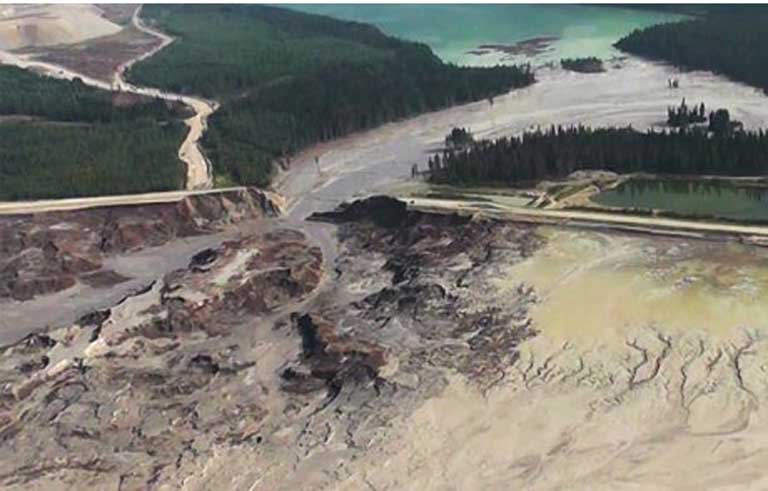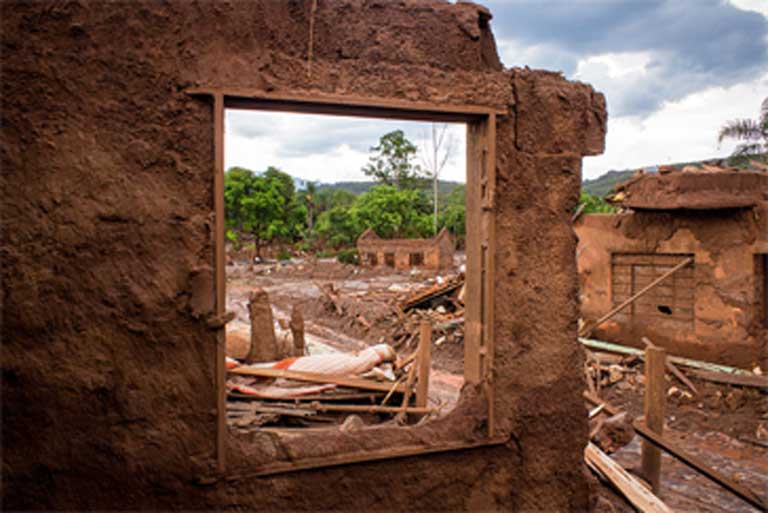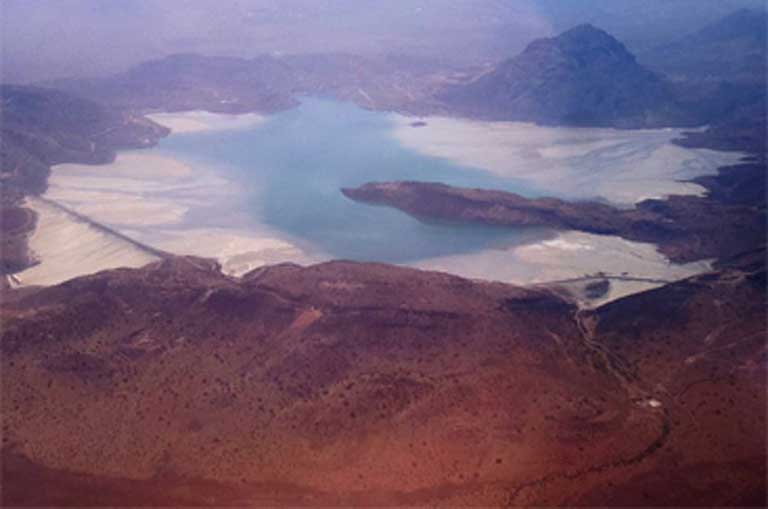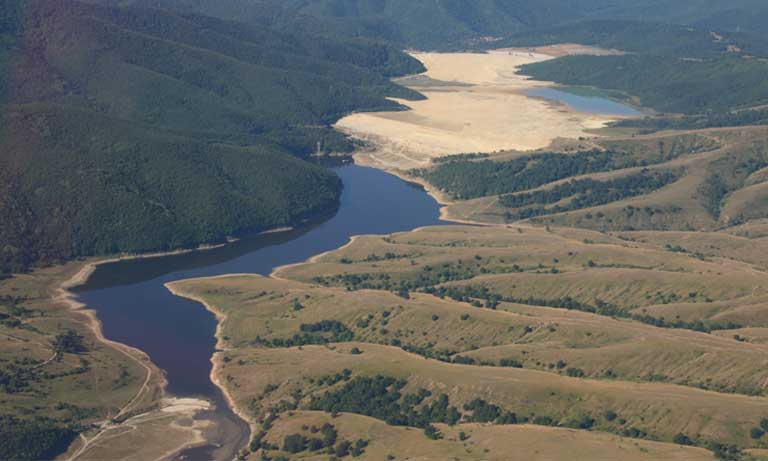- Between 2008-2017 it’s estimated that more than 340 people died, communities have been ravaged, property ruined, rivers contaminated, fisheries wrecked and drinking water polluted by mining tailings dam collapses. Estimates from the year 2000 put the total number of tailings dams globally at 3,500, though there are likely more that have not been counted.
- A new United Nations Environmental Programme (UNEP) report states that as mining production escalates globally to provide the minerals and metals required for a variety of industrial needs, including green technologies, it is urgent that nations and companies address tailings dam safety.
- The UNEP report recommends that mining companies strive for a “zero-failure objective” in regard to tailings dams, superseding economic goals. UNEP also recommends the establishment of a UN environmental stakeholder forum to support stronger international regulations for tailings dams, and the creation of a global database of mine sites and tailings storage facilities to track dam failures.
- One idea would be to eliminate types of tailings dams that are just too dangerous to be tolerated. For example, mining experts say there is no way to insure against the failure of “wet tailings disposal” dams, like the Samarco dam that failed in 2015 – Brazil’s worst environmental disaster ever. As a result, they recommend storing all future tailings waste via “dry stock disposal.”

It’s estimated that more than 340 people have been killed since 2008 in mining tailings dam failures –preventable environmental disasters that also saw the ruination of communities and property, the contamination of rivers, destruction of fisheries, and pollution of drinking water supplies.
Spurred by those calamities, the United Nations Environmental Programme (UNEP) has issued a report stressing the need for increased tailings dam safety around the globe. Tailings dams store pools of toxic mining waste.
UNEP notes that large quantities of minerals and metals will be required in the near future for a variety of industrial needs, including the development of green technologies that support the UN´s 2030 Sustainable Development Goals (SDGs). The report offers two key recommendations and a number of policy actions to dramatically reduce tailings dam fatalities and accidents.
The first recommendation: Mining companies should strive for a “zero-failure objective,” superseding economic goals. UNEP cites an expert panel convened in the wake of a major tailings dam failure in British Columbia, Canada, the Mount Polley gold and copper mine, which dumped 24 million cubic meters (more than 31 million cubic yards) of mine waste and sludge into neighboring Lake Polley. The panel concluded that “safety attributes should be evaluated separately from economic considerations, and cost should not be the determining factor.”
The second key UNEP recommendation: Establish a UN environmental stakeholder forum to support stronger international regulations for tailings dams.
Payal Sampat of Earthworks, a US-based NGO, notes: “Mine waste storage facilities are like ticking time bombs, putting communities and waterways in harm’s way in the event of catastrophic failure.”

A record of disaster
The UNEP report was prompted by multiple serious accidents occurring around the world over the past decade. It points to China and Canada as the two countries with the worst recent safety record. Canada has had seven accidents since 2011, while China has had eight. Chile registered five separate tailings dam failures in 2010, according to the report, while the U.S. saw five tailings dam accidents over the past decade.
Other countries have experienced disasters and grief. In Minas Gerais state, Brazil, on November 5, 2015, the Fundão dam collapsed releasing 50 million tons of toxic iron tailings into the Doce River – the nation’s worst environmental disaster ever. The dam held back waste from the Germano mine run by Samarco, a joint venture of BHP Biliton and Vale, two of the world´s largest mining firms. Nineteen people died when the slurry engulfed the town of Bento Rodrigues. Survivors fled for their lives to high ground and were left homeless. More than 500 miles of the river was contaminated, all the way to the Atlantic Ocean.
Ugo LaPointe of Mining Watch Canada told DeSmog Canada that these major disasters represent just a portion of the problem: “This is just a glimpse of what we know. A lot of the data is missing. We need an international database of mining spills and mining failures. If you don’t collect that solid data, you are not in the best position to correct the problems.”
Along with increased international regulation of tailings dams, UNEP’s Safety is No Accident report also calls for the establishment of a first-of-its-kind global database of mine sites and tailings storage facilities to facilitate the tracking of dam failures. Research cited from the year 2000, estimates that there are 3,500 tailings dams around the globe, though that figure is likely low considering that there are around 30,000 industrial mines planet-wide. No one knows how many tailings dams there may be, or their current condition.
The UNEP report also calls for financial securities firms to give mining companies an economic incentive to prioritize safety. Suggestions include a global insurance pool, mandatory financial securities for the life of every mine, and a global financial assurance system for mine sites.

Views within the industry
Canada’s mining industry plays a significant and influential role internationally, with 30 Canadian mining companies operating in Brazil, for example. Further, Canadian mining firms were given advance notice earlier this year about the Brazilian government’s plans to open up a vast region in the Amazon to mineral extraction. Canada’s mining sector contributed $56 billion to Canada’s gross domestic product in 2015.
The Mining Association of Canada told DeSmog Canada it would soon be releasing a revised Tailings Guide informed by mine reviews conducted by an independent task force it had assembled.
A spokesperson for the U.S. National Mining Association (NMA) told Mongabay via email that the UNEP report’s recommendations don’t apply to the United States, “where mining is heavily regulated for any releases to the environment and where the only event of this type in recent years was caused not by miners but by a faulty EPA operation in an old legacy mine [Gold King] in Colorado.”
However, a Bureau of Reclamation audit of that spill found that the circumstances “are not isolated or unique, and in fact are surprisingly prevalent” in the United States. The audit also reported that the release was the culmination of events over several decades including an “inadequately designed closure of the mine portal” and misinterpretation of the groundwater conditions when it was reopened in 2014/2015.
Asked whether the NMA plays any role in monitoring U.S.-based companies’ international operations, the spokesperson said that the NMA doesn’t regulate mining operations.
LaPointe emphasized that: “The problem is that the industry is not yet acknowledging publicly that there are too many financially risky, marginal mines that are being permitted.” He maintained that marginally profitable companies and mines are a major part of the problem because they cut corners on safety and don’t have the money to guarantee the safety of people and the environment.

“Reducing the number of dams that can fail”
Suzanne Greene, a communications officer for the Massachusetts Institute of Technology Metals and Minerals for the Environment group, told Mongabay that a “key element of dam safety is reducing the amount of waste produced by the mine. MIT has a number of technologies under development that will help achieve this, such as low or no-waste extraction and separation.” Greene also pointed to new technologies, such as sensors that can be embedded in dam walls, to monitor and detect cracks or bulges in these structures in real time.
As importantly, some types of dams may need to be abandoned all together. Speaking with Mongabay by phone, Earthworks’ Alan Septoff explained that there are “financial assurances that are intended to do reclamation after a mine completes operations, and financial assurances for when something goes wrong.” But in the case of a disaster as extreme as Brazil’s Fundão disaster, Septoff cited research by Chambers and Bowker which concluded that “it’s essentially impossible for a company to get insurance for this severity.” And logically, if companies can’t get insurance for a particular type of operation because it is too risky, that type of operation will be eliminated, preventing future disasters, and promoting safer methods.
As an example, Septoff points to Canada’s Mount Polley rupture and to the conclusions the review panel produced: “The independent review panel, which was peopled with mining engineers working for industry, said there was no way to insure against ‘wet tailings disposal’ like the kind that failed at Samarco [in Brazil] and that all future tailings storage need to be ‘dry stock.’”
The Mount Polley report added: “The Panel firmly rejects any notion that business as usual can continue.” And also that “The Panel does not accept the concept of a ‘tolerable failure rate’ for tailings dams.” Rejecting the idea of slow incremental change within the industry, the panel concluded: “dam failures are reduced by reducing the number of dams that can fail.”
For Septoff, this conclusion contrasts with most industry rhetoric: “Industry is trying to give the perception that this problem is going to go away, and so people should keep investing, but if the true cost of this type of disposal is made known, then the prospects for responsible investors investing in them will go considerably down.”
FEEDBACK: Use this form to send a message to the author of this post. If you want to post a public comment, you can do that at the bottom of the page.

